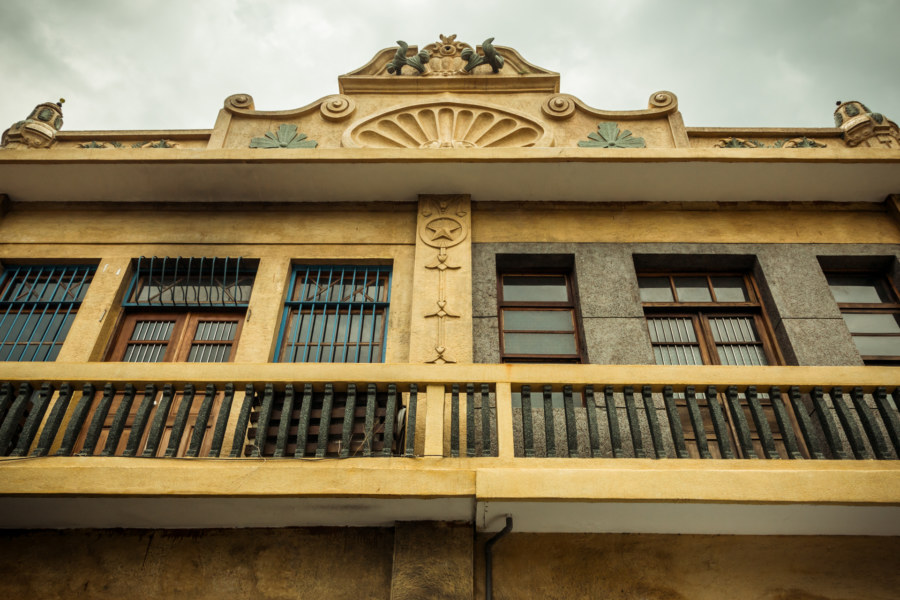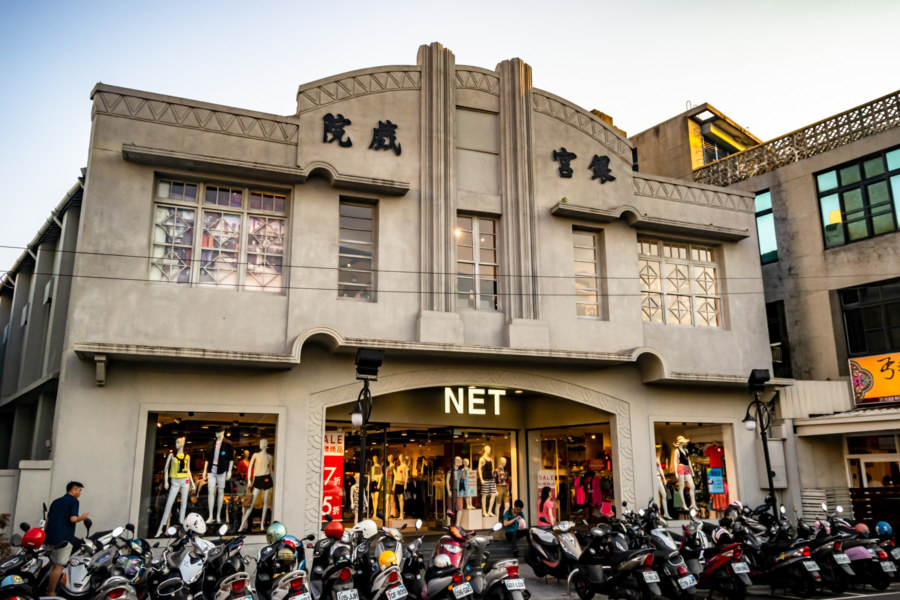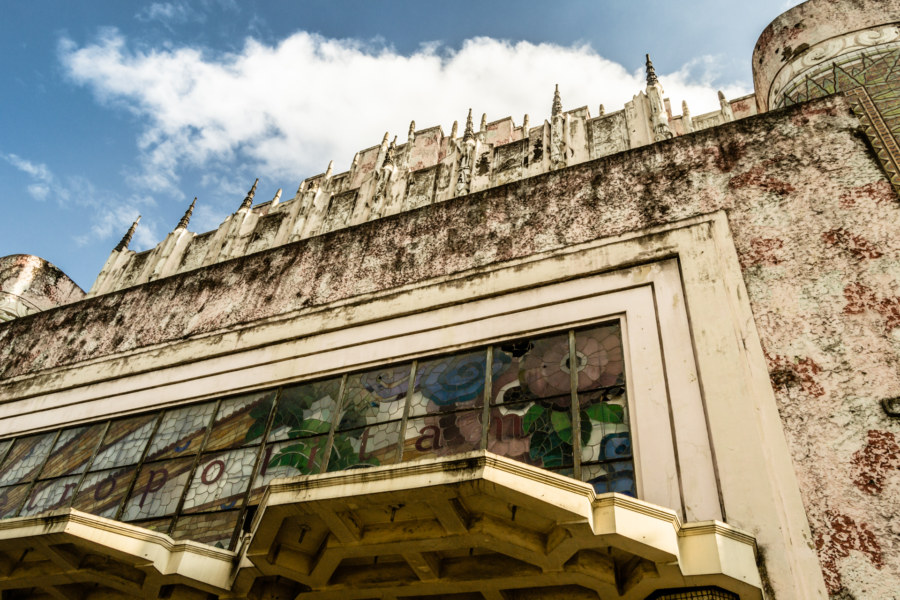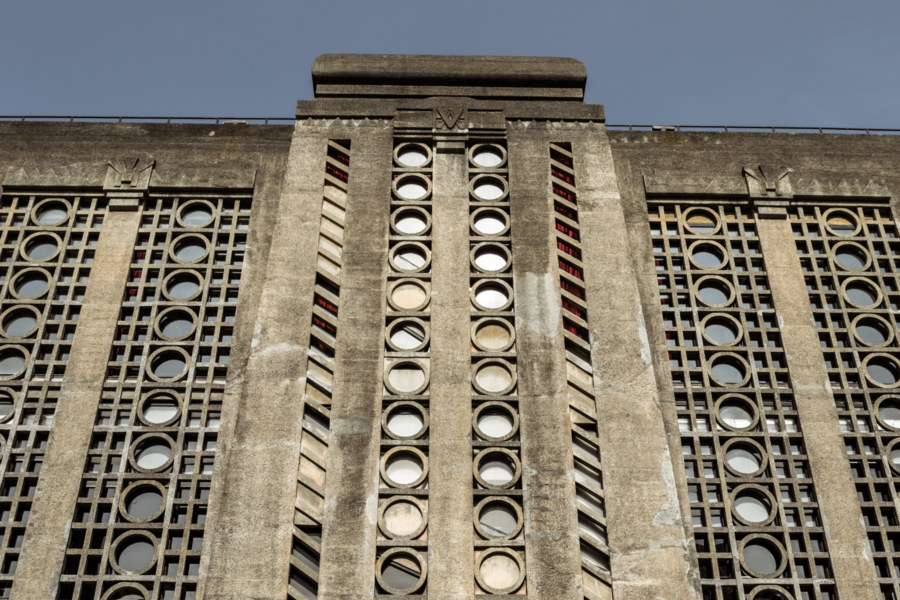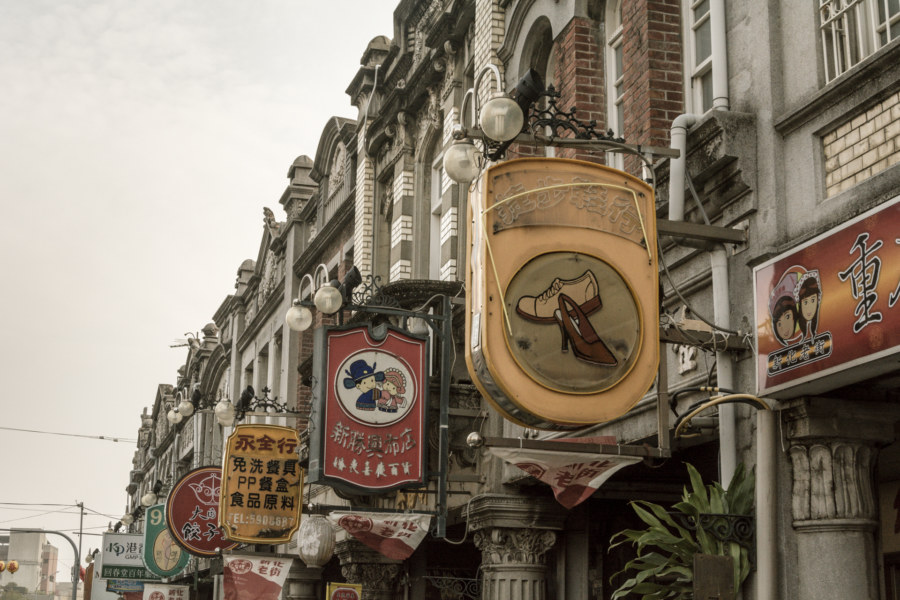Xiluo is a small historic town on the south bank of the Zhuóshuǐ River 濁水溪 in Yunlin. It emerged as an important center of trade in central Taiwan during the Qing dynasty era and continued to prosper into the early 20th century under Japanese colonial rule. Disaster struck in 1935 when the devastating Hsinchu-Taichung Earthquake ripped through north-central Taiwan, reducing much of Xiluo to rubble. Colonial authorities and the local gentry worked together to rebuild, taking the opportunity to completely remodel the main commercial thoroughfares with an intriguing blend of influences from Baroque Revival, Art Deco, and Modernist architecture. A short stroll down Yánpíng Old Street 延平老街 reveals that many of these unique shophouses and commercial buildings remain standing today.
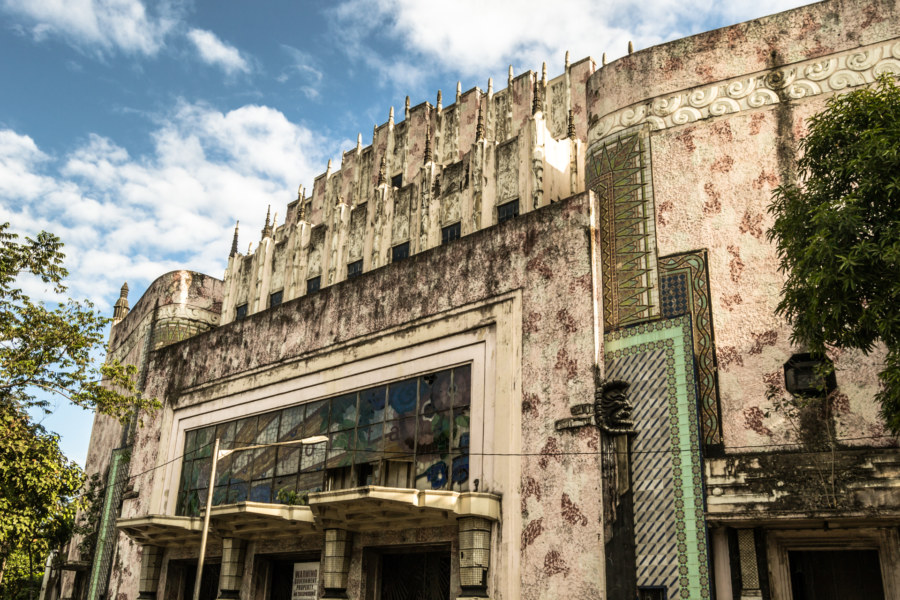
Art Deco is a particular style of architecture and ornamentation that began in the 1920s and spread all around the world. Here I am particularly interested in Art Deco's many under-appreciated manifestations in Asia.
Adjacent Terms
Yingong Theater 銀宮戲院
Despite living in Changhua City for half a year I never paid much attention to the clothing store across the street from the historic Confucius Temple 彰化孔子廟. At that time my Chinese abilities were rudimentary and I wasn’t really aware of what kinds of buildings to watch for while navigating the variegated urban landscapes of Taiwan. Only after encountering Datong Theater 大同戲院 in Taitung City did I become fascinated by the rise and fall of Taiwanese cinema. Since then I have mapped the locations of more than a hundred vintage theaters and documented many of their fates. Most end up abandoned or destroyed—but Yíngōng Theater 銀宮戲院 earned a new lease on life after it was purchased by NET, a Taiwanese fashion retailer.
Manila Metropolitan Theater
Manila Metropolitan Theater, or simply the Met, is the largest and most famous Art Deco theater in Manila. Designed by the prolific Juan M. Arellano, the Met officially opened in 1931 and soon became a focal point for Manila’s high society. Like most of the rest of the city Manila Metropolitan Theater was heavily damaged in the Battle of Manila. The post-war era wasn’t kind to the Met; it fell into disrepute for decades until restoration efforts were undertaken in the late 1970s. Ownership disputes led to another phase of neglect in the mid-1990s and today it remains abandoned despite occasional efforts at rehabilitation.
1933 Shanghai: Art Deco Abattoir
Gathered here are several photographs from a brief walk around 1933 Shanghai (上海1933老场坊), an unusual slaughterhouse in Hongkou, part of the former Shanghai International Settlement. Designed by a British architect in an arguably Art Deco style and built with imported cement in 1933, it was recently renovated and transformed into a hub for the creative industries. Seeing as how this is Shanghai, several high-quality English language articles have already been published about it, so I will hereby refer you to Atlas Obscura, Shanghai Art Deco, Mas Context, Randomwire, and La Casa Park for more information and informed analysis.
An Architectural Tour of Central Manila
During my weeklong trip to Manila late last year I ventured into Binondo and Quiapo to check out some of the famous old Art Deco buildings in the area. Along the way I also visited Paco Railway Station (entirely by accident) and the Manila Metropolitan Theater. Presented here are an assortment of other pre-war buildings from the early 20th century, annotated with links to more information.
Xinhua Old Street 新化老街
Xinhua Old Street 新化老街 is one of the finest old streets in all Taiwan. Located in Xinhua, Tainan, the street is lined baroque revival and art deco buildings from the Japanese colonial era. Most of the buildings on the western side of the street date back to the 1920s whereas the eastern side features a more modernist style from the late 1930s.
